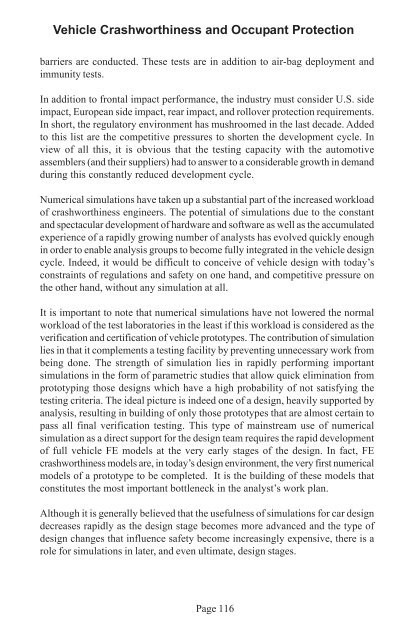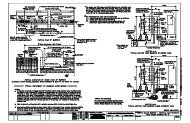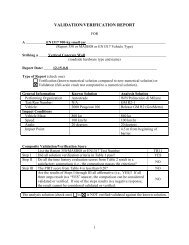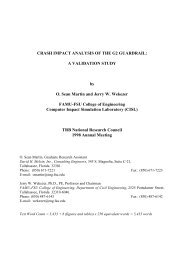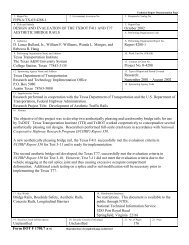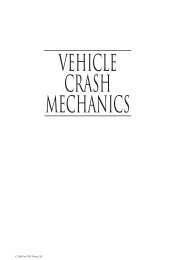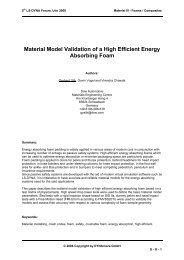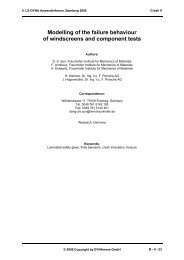Vehicle Crashworthiness and Occupant Protection - Chapter 3
Vehicle Crashworthiness and Occupant Protection - Chapter 3
Vehicle Crashworthiness and Occupant Protection - Chapter 3
Create successful ePaper yourself
Turn your PDF publications into a flip-book with our unique Google optimized e-Paper software.
<strong>Vehicle</strong> <strong>Crashworthiness</strong> <strong>and</strong> <strong>Occupant</strong> <strong>Protection</strong><br />
barriers are conducted. These tests are in addition to air-bag deployment <strong>and</strong><br />
immunity tests.<br />
In addition to frontal impact performance, the industry must consider U.S. side<br />
impact, European side impact, rear impact, <strong>and</strong> rollover protection requirements.<br />
In short, the regulatory environment has mushroomed in the last decade. Added<br />
to this list are the competitive pressures to shorten the development cycle. In<br />
view of all this, it is obvious that the testing capacity with the automotive<br />
assemblers (<strong>and</strong> their suppliers) had to answer to a considerable growth in dem<strong>and</strong><br />
during this constantly reduced development cycle.<br />
Numerical simulations have taken up a substantial part of the increased workload<br />
of crashworthiness engineers. The potential of simulations due to the constant<br />
<strong>and</strong> spectacular development of hardware <strong>and</strong> software as well as the accumulated<br />
experience of a rapidly growing number of analysts has evolved quickly enough<br />
in order to enable analysis groups to become fully integrated in the vehicle design<br />
cycle. Indeed, it would be difficult to conceive of vehicle design with today’s<br />
constraints of regulations <strong>and</strong> safety on one h<strong>and</strong>, <strong>and</strong> competitive pressure on<br />
the other h<strong>and</strong>, without any simulation at all.<br />
It is important to note that numerical simulations have not lowered the normal<br />
workload of the test laboratories in the least if this workload is considered as the<br />
verification <strong>and</strong> certification of vehicle prototypes. The contribution of simulation<br />
lies in that it complements a testing facility by preventing unnecessary work from<br />
being done. The strength of simulation lies in rapidly performing important<br />
simulations in the form of parametric studies that allow quick elimination from<br />
prototyping those designs which have a high probability of not satisfying the<br />
testing criteria. The ideal picture is indeed one of a design, heavily supported by<br />
analysis, resulting in building of only those prototypes that are almost certain to<br />
pass all final verification testing. This type of mainstream use of numerical<br />
simulation as a direct support for the design team requires the rapid development<br />
of full vehicle FE models at the very early stages of the design. In fact, FE<br />
crashworthiness models are, in today’s design environment, the very first numerical<br />
models of a prototype to be completed. It is the building of these models that<br />
constitutes the most important bottleneck in the analyst’s work plan.<br />
Although it is generally believed that the usefulness of simulations for car design<br />
decreases rapidly as the design stage becomes more advanced <strong>and</strong> the type of<br />
design changes that influence safety become increasingly expensive, there is a<br />
role for simulations in later, <strong>and</strong> even ultimate, design stages.<br />
Page 116


